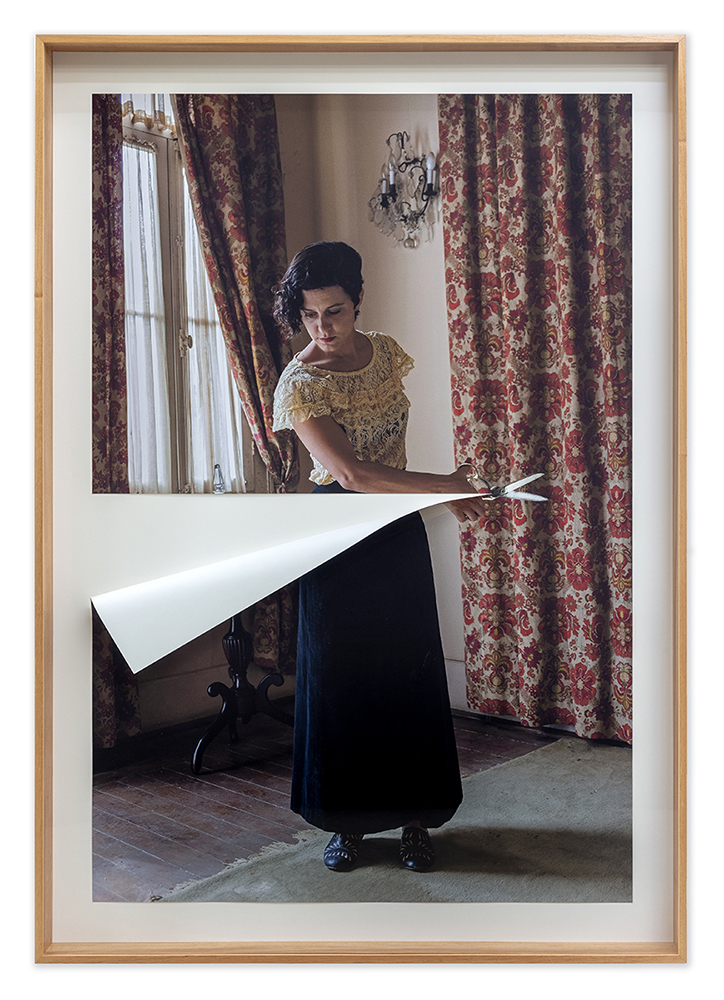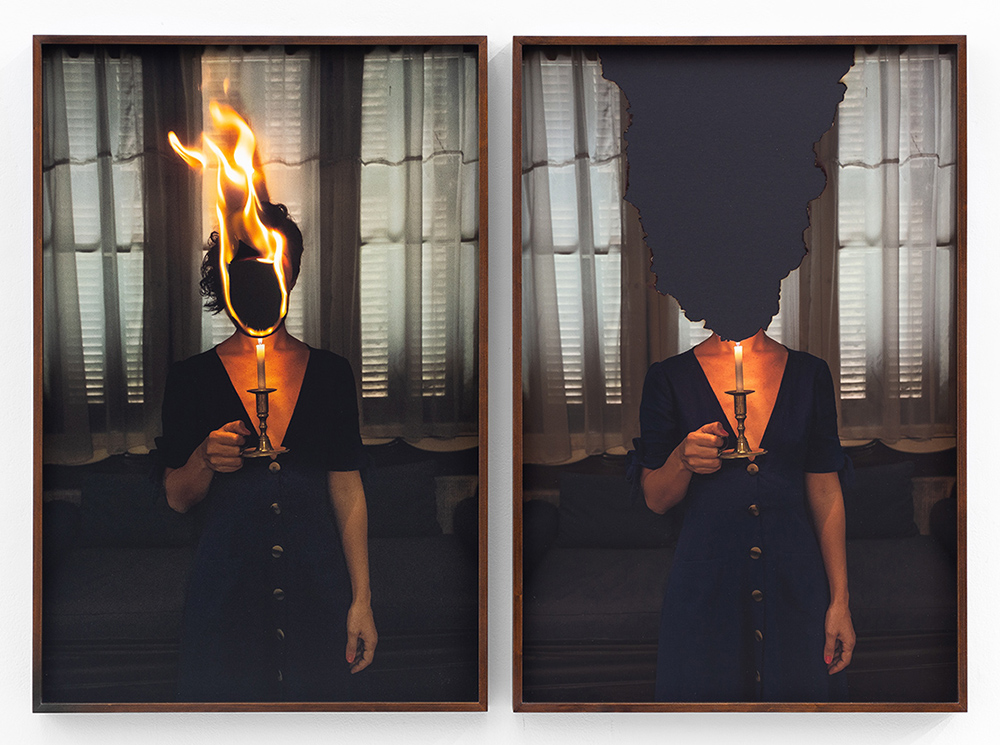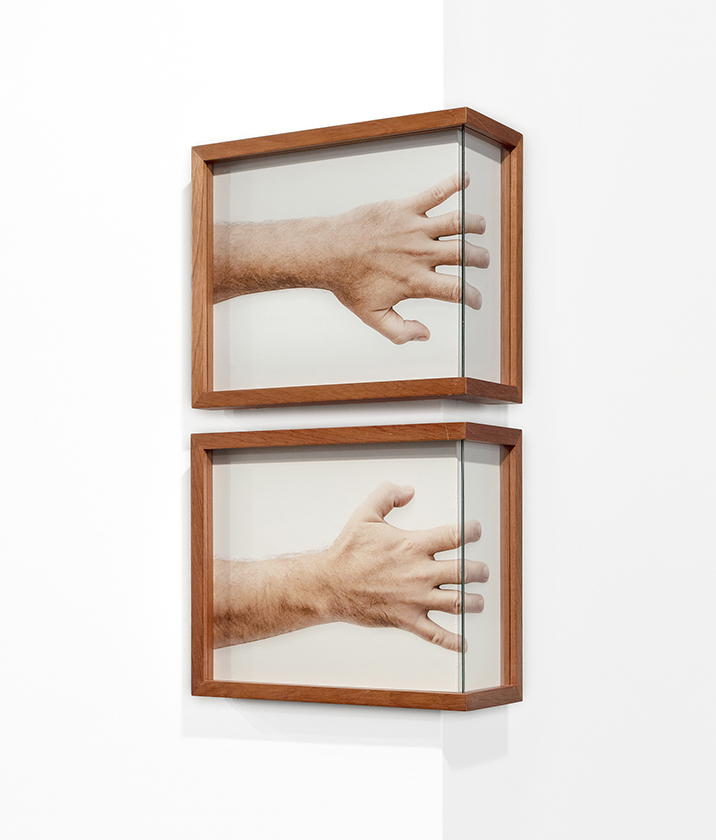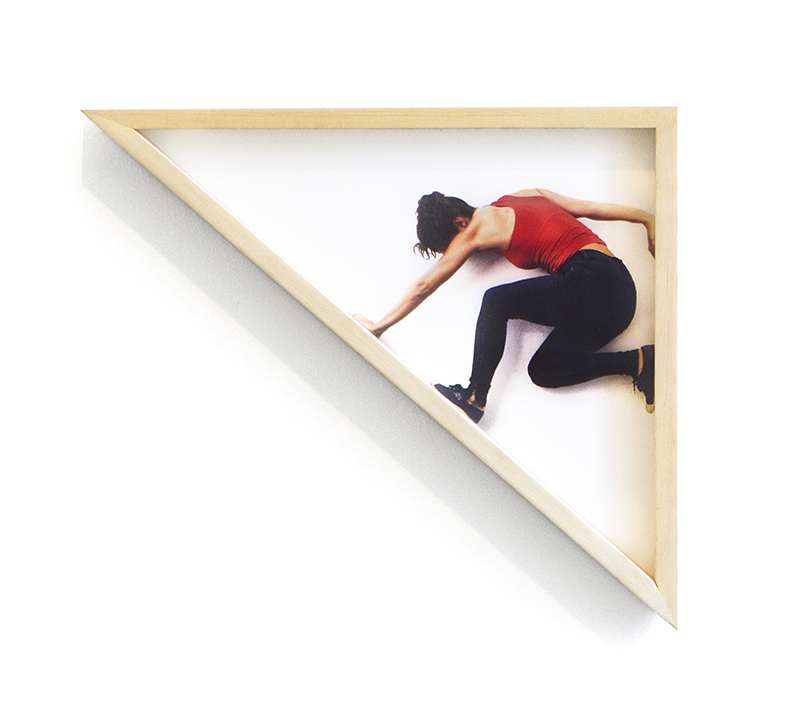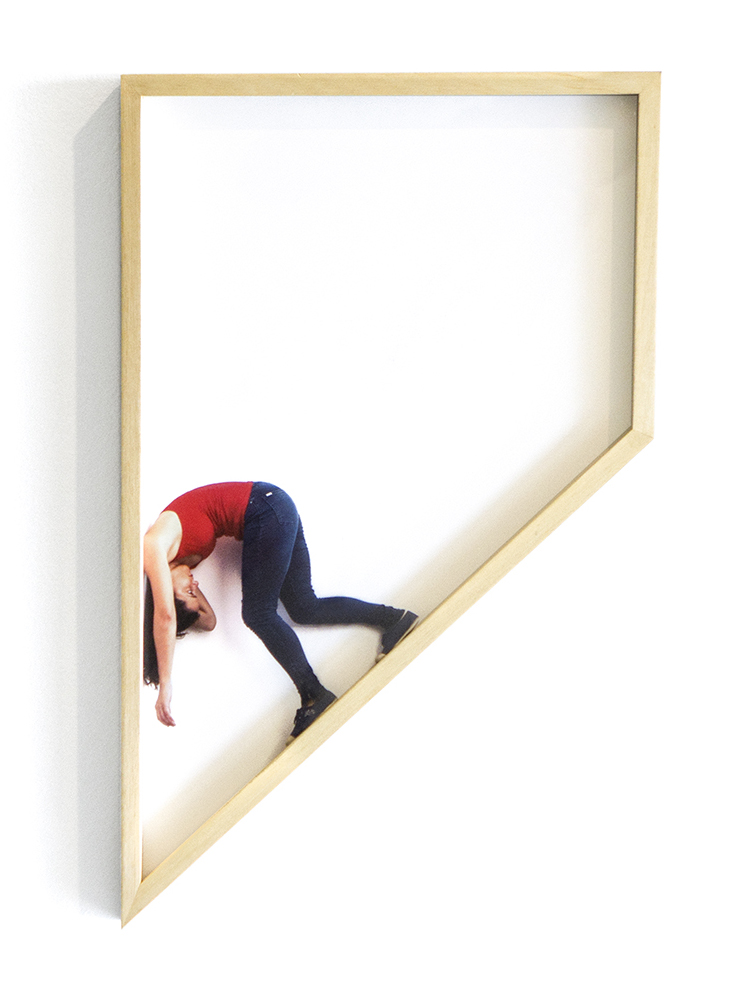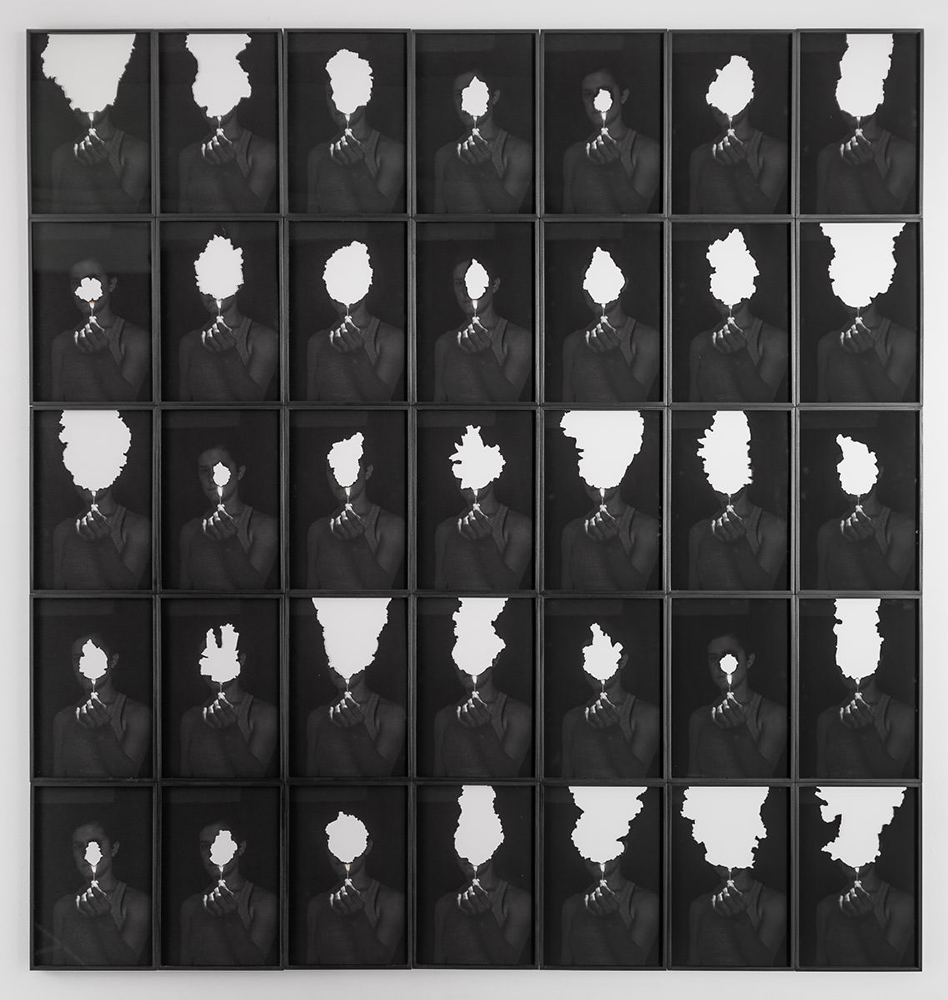Brazil Week: Celina Portela
This week once again we will dive into the diverse Brazilian Photography presenting incredible works by Aline Motta and Eustáquio Neves, both at the current 35º Bienal of São Paulo, Claudia Jaguaribe, José Diniz and Celina Portela, addressing various themes such as environment issues, ancestry, racism, dance and movement, through instigating approaches.
Today we feature Celina Portela. An interview with the aritst follows.
The work of Celina Portella permeates the universe of the plastic arts and dance. This artist establishes dialogs among architecture, cinema, performance and finally sculpture, characterizing her research in the fields of representation of the body and its relationship with space. Frequently using her own body as a subject for experiments, Celina blends almost craft-like practices in videos, photographs or photo-objects that challenge the characteristics of each support and the perceptions of the observer.
She has been nominated for prizes such as the Bolsa ICCO/SP-Arte 2016; Prêmio de Aquisição EFG Bank & Art-Nexus, at SP-Arte (2015) and the Prêmio Pipa (2013 and 2017). She was awarded at Luxemburg Art Prize (2021), at the Casa Wabi/ Salon Acme Residency Award in México (2020) at the XX Bienal Internacional de Artes Visuales de Santa Cruz in Bolivia (2016), and the II Concurso de Videoarte da Fundaj in Recife (2008).
She was awarded fellowships under the following Programs: Programa de Estímulo à Criação, Experimentação e Pesquisa Artística SEC + Faperj (2016); the I Programa de Fomento à Cultura Carioca em Artes Visuais (2013); the Bolsa de Apoio à Pesquisa e Criação Artística by the State Culture Bureau (2012), and the Núcleo de Arte e Tecnologia da EAV Parque Lage in Rio de Janeiro (2010).
She completed artistic residencies at the Bag Factory Artists’ Studios in Johannesburg, South Africa; the Center International d’Accueil et d’Échanges des Récollets in Paris; the LABMIS at the Museu da Imagem e do Som in São Paulo; and the Galeria Kiosko in Santa Cruz de La Sierra, Bolivia, among others.
She has implemented projects and displayed her works at many institutions and galleries in Brazil and abroad, including: SESC São Paulo, Centro Cultural Banco do Brasil, EAV Parque Lage, Centro Municipal de Arte Hélio Oiticica, MAC Santiago de Chile, Uj Art Gallery, Galeria Inox, Zipper Galeria, Galeria Kiosko, A Gentil Carioca. Noteworthy among the group shows in which she has participated: Frestas Trienal de Artes at SESC Sorocaba, São Paulo (2017); the III Mostra do Programa de Exposições Centro Cultural São Paulo (2012) and the Nova Arte Nova exhibition at the Centro Cultural Banco do Brasil in Rio de Janeiro and São Paulo (2009). As a dancer and co-creator, she has worked with choreographers Lia Rodrigues e João Saldanha.
Born in Rio de Janeiro, Celina currently lives in São Paulo. She studied design at the Pontifical Catholic University (PUC) in Rio de Janeiro, graduated in plastic arts from the Université Paris VIII and is currently studying Arts of the body at PUC São Paulo.
Follow Celina Portella on Instagram: @celinaportella
I have a special interest in interdisciplinary research on image, movement and body. My research relates elements of photography and video, in different media. I have been working with installations, in works that are characterized especially by a questioning about the representation of the body and its relationship with space. At the intersection of several genres, involved simultaneously, I touch on the worlds of dance, performance, architecture, cinema, and more recently, sculpture.
My work has a deep connection with the choreographic universe, due to my professional experience with dance, as a dancer and co-creator, from which my interest in the actions of the body and the problems of its representation comes.
After my first videos, I developed an extensive investigation into the projection of the body on a full scale and the overlapping of images, incorporating architectural materiality into the work. The projections led me to specifically question the support of video and image and to explore new media and technologies.
I then began to create a series of works where the body appears in the image interacting with the limits of its frame, materially including the world of objects, or sculpture, in an originally virtual field. Proposing an interaction between bodily expression and the media, I seek to make photography and video structural parts of the work itself, so that performance and medium are combined, becoming inseparable.
The central focus of my work, therefore, converges on the limit between virtual reality and corporal actions, in an attempt to blur their borders and confuse the real with the universe of fiction. With the artifice of trompe-l’oeil and the radical integration of media, I work in the ambiguous terrain between the material and the immaterial, between the objectivity of the world and illusion. – Celina Portela
What led you to work with photography? And what keeps you connected to it?
My work with image began with dance. I believe that by working with the body and writing the movement of the body in space we are inscribing images in space, live. My first jobs were with Super8 films, where there was dancing for the camera. I soon started working with digital film and projecting the body in life size onto different surfaces. This led me to think about the support of the image and the relationship between the image itself and this support. Since then I have been investigating new techniques and photography is the main one. My work addresses the representation of the body and questions about perception and the consensual idea of reality. I believe that this keeps me connected to photography and video, although I also feel that this tends to change.
In your work you mix dance, movement with visual arts. How did this meeting come about?
I have a long professional experience as a dancer and co-creator and it was from this that the need to encounter other languages arose. In my first dance works for the camera, I already understood that my interest went beyond issues of dance as a technique, to a broader idea of choreography. My research has been changing and in many cases, especially in photographs, where the image is “static”, the dance no longer appears explicitly. However, their movement and choreography are key to all the works and I believe that without this experience I wouldn’t know how to perform them. Both my ideas and the way I produce my work are always influenced by my bodily experience and spatial notion. The intersection of languages and media interests me a lot, and is present in all my work. There are photo-objects, video-objects, video-installations, performance-projection, in short… many possible intersections that happen not by primary intention but based on ideas that require these mixtures. The context of Visual Arts encompasses a plurality of experimentation and intersections and that is why my work is compatible with this sphere.
You expand the traditional concept of photography by bringing three-dimensionality to your works. Could you tell us a little about this process?
By proposing a relationship between the meanings of the image and its support, the photographs I take expand into space in different ways. In the first series where this happened, the body interacted with the photo frame. In the following ones, the image has expanded into materials or objects that go beyond the frame. In the “Folds” series, images of body parts, printed at full size, are folded. Thus the photo also becomes a gesture and a sculpture. In other series there is an intervention on the role of photography that also creates volumes and three-dimensionality. The works, one after the other, bring new ideas and experiments and this is how my investigation developed, bringing this question about two-dimensionality, as if the images wanted to become real.
And what lies ahead?
Lately I have been working with ceramics, in works that also derive from photography, performance and video. The world of this material is extensive and I am still learning about this technique. I don’t know exactly where it will take me yet.

©Celina Portela, Photonovela of Opression, 2018 Series: Photo-Paintings Photography and oil paint on canvas

©Celina Portela, In contrast , 2020 Urban intervention Espaço Cultural Sérgio Porto, Rio de Janeiro

©Celina Portela, View of the What Knot not exhibition, 2018 Bag Factory Artists Studio Residency, Johannesburg
Coming from a patriarchal family in the Northeast of Brazil, Ana Leal began her path in the art world when she decided, almost at age 50, to dedicate herself fully to her old passion: photography. With a female gaze and perspective, Leal focuses her research on psychological themes.
Born in Recife and based in São Paulo, Leal is an artist who works primarily in photography exploring themes of fragility, temporariness, and impermanence. Inspired by impressionism and minimalism her images share an abstract aesthetic.
Leal is a Gold Award winner at the 2020 TIFA and the 15th Julia Margaret Cameron Award Winner in the abstract category. She also received a Bronze Medal at the ND Awards 2021 and Honorable Mentions at the IPA 2021, Rotterdam Photo 2021, Prix de La Photographie Paris 2019, and The 15th Pollux Awards. She completed her MFA at the Miami International University of Arts and Design (2018) and the Professional Photography Course at the Pan-American School in São Paulo (2013). Her work is part of the Florida Museum of Photographic Arts – FMoPA collection. She works also as a content editor for South America at Lenscratch.
Instagram: @analealphoto
Posts on Lenscratch may not be reproduced without the permission of the Lenscratch staff and the photographer.
Recommended
-
Salua Ares: Absense as FormNovember 29th, 2025
-
Ricardo Miguel Hernández: When the memory turns to dust and Beyond PainNovember 28th, 2025
-
Pamela Landau Connolly: Columbus DriveNovember 26th, 2025
-
KELIY ANDERSON-STALEY: Wilderness No longer at the Edge of ThingsNovember 19th, 2025
-
Jackie Mulder: Thought TrailsNovember 18th, 2025



